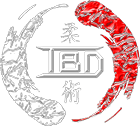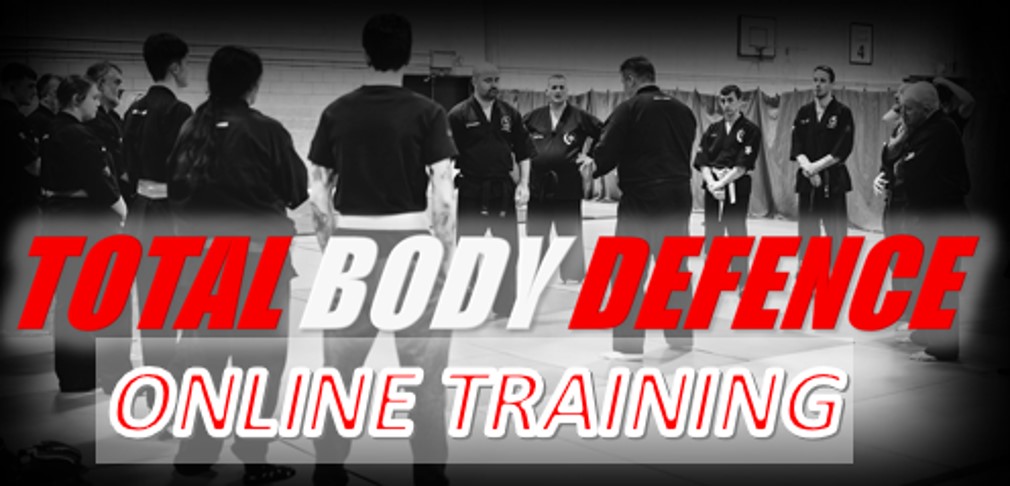I started training with Soke Dai John Warfield (Co-founder of the Goshinkwai Yawara Ryu) at his private Saturday class in 1993 together with a couple of his senior Instructors. I was 26 year old at the time and was both the youngest and most Junior grade in the class. The training was very fast, hard and focused and it took me several weeks to adjust to such a way of training. I was training with some of John’s most senior students and if I could compare the training to what I had been accustomed to, it was like moving to National level compared to County level – some change.

Soke Dai John Warfield
Although the training was intense, It was just what I needed in order to progress and I had the good sense to write most of the techniques and principles down, being able then to study them in detail at my own classes, passing on the teachings to my senior students, in order to expand the knowledge and fine-tune their application. The training would concentrate on various principles, starting initially with footwork, something that John had quoted, as being the most important part of his tuition.
I had never really studied footwork patterns and body movement in any detail before and remember finding the patterns difficult to master, something I now don’t even think about during training! The footwork would almost always be followed up with aggressive low kicks to kneecaps, shins, groin etc to disable or offset the opponent’s balance, before moving into the next category, Atemi or striking. John held a 4th Dan grade in Atemi and this is the area of his training that always impressed me the most. I remember him demonstrating multiple strikes on me one morning, performing an extremely fast attack and catching my eye-lid with a painful fingertip strike.
My opponent asked if he could see the technique again (which was very good of him!), to which John agreed, hitting me in the exactly same spot with the same force! This type of accuracy only comes with intense training and focus. I had performed atemi in my earlier training, mainly punches, chops, palm heels etc, but now I was being made to practice far more complex strikes, having to change hand positions continuously during multiple strikes, and using what seemed unorthodox knuckle, wrist, edge of hand strikes etc at the time – Something again that comes natural with time and practice.
I hardly ever employ punches as a result of his teaching but concentrate more on palm heel, knuckle, forearm and elbow strikes, which to me are far more versatile and destructive. Following the atemi, we moved on to grappling or Kumi-Uchi to give it its formal Japanese name. I had previously been taught to just sweep or throw the opponent to the floor to finish or maybe use some very basic grappling, pull downs, pushes etc. Again, more comprehensive technique was introduced, concentrating on focused aggression and power, whilst simultaneously causing pain and injury. At this stage I could see just how important the previous footwork and atemi study had been, as I was now able to move much more fluently whilst grappling, which made manipulation of the opponents far easier, together with causing pain and injury from rapid atemi and strong holds etc. The atemi would concentrate primarily on the head, as this is where the opponent’s balance and senses can be most effectively be broken down.
I tell my students that the feeling of having someone bombard you with fast, ferocious atemi and then painful grappling is something I compare as to being on a roller-coaster ride, you simply want to close your eyes and pray for it to be over!
We would spend several sessions attacking purely with our forearms, or knuckles to strengthen the techniques. Next, we moved onto “Focused training”, concentrating extensively on the opponent’s initial body movements and posture. This type of training again was difficult at first, but as with the multiple atemi, the benefits of being able to quickly adapt your technique according to varying individuals came with time.

John Warfield and Alun at Newport
I was running 3 clubs at this stage, whilst continuing training with John each week and on 7th October 1995 I was awarded my 3rd Dan; something I had worked for with my training partner, Oliver (Olly) Pritchard for several months previously. This grading in particular sticks in my mind, mainly due to the fact that I had put so much effort into it and had actually written a detailed 26-technique presentation, splitting the grading into 1) Close contact, 2) Footwork and 3) Defence from weapons sections. I only got through half the presentation, before I was stopped, I mentioned that I hadn’t finished the presentation, to which I was allowed to continue for a few more techniques – I didn’t want to get off the mat!
I particularly feel that preparation is key and the previous seven months was a perfect example of how to be ready. My 4th Dan came only a year later on 30th November 1996 and shortly following John’s sad death it was with mixed emotions that I received my current grade, 5th Dan on 18th October 2003.
It was a privilege to have not only known John on a personal level but to have had the honor of training under him. He remains without doubt the foremost Self Defence practitioner I have ever witnessed, he shall never be forgotten.
John Demonstrating with Me Newport Centre
Follow the blog for more information and to read more about Alun’s journey. Find out about his online training programme here.



